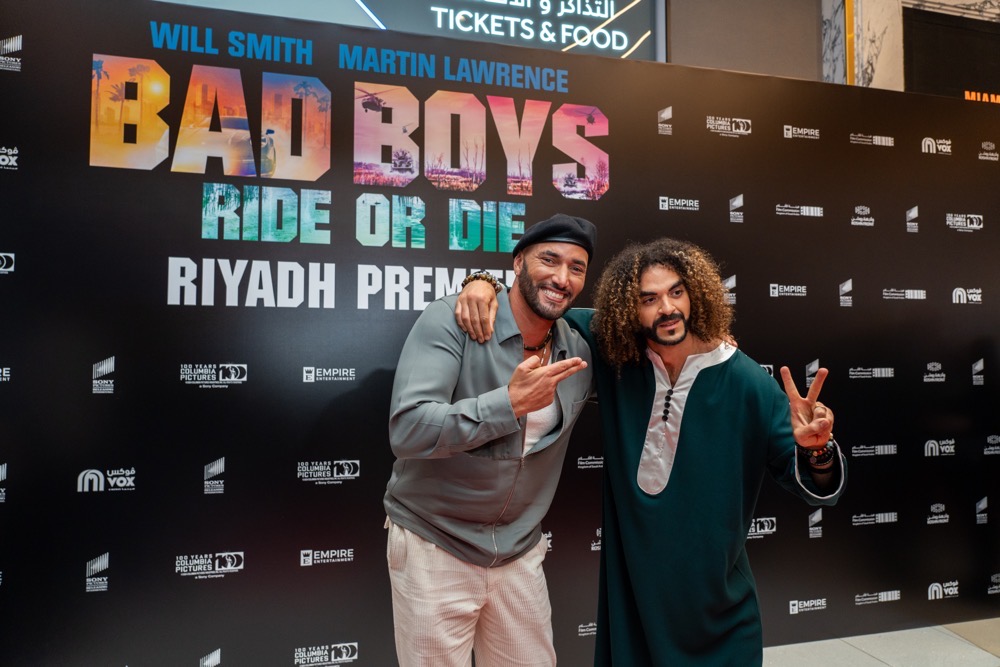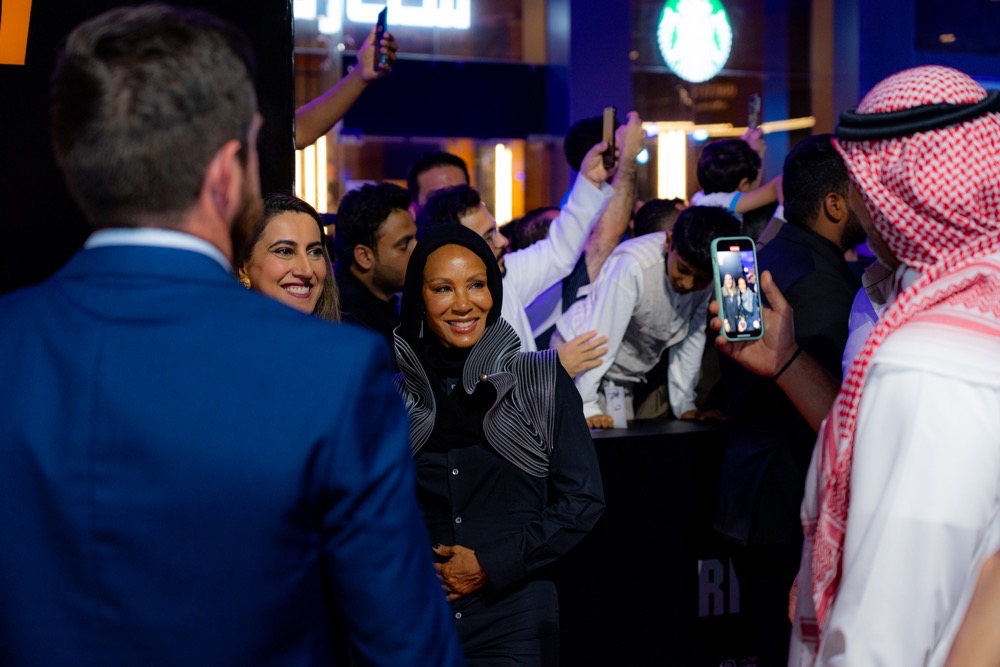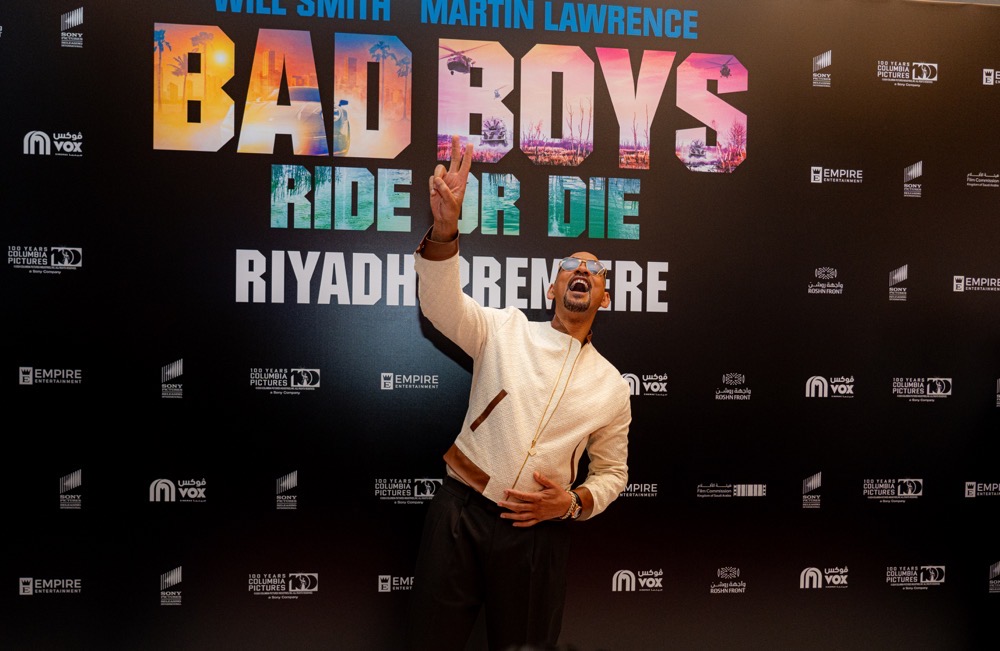RIYADH: Cameras flashed and crowds cheered as Will Smith and Martin Lawrence hit the red carpet at Roshn Front’s VOX Cinema in Riyadh on Friday night to mark the fourth installment of the “Bad Boys” film franchise.
“Bad Boys: Ride or Die” arrives 30 years after Mike Lowrey and Marcus Burnett, played by Smith and Lawrence, respectively, teamed up as the infamous buddy cops.
The latest film, exclusively in cinemas on June 6, shows how the characters have changed over the years.
“Their backs have gotten weaker, and their knees hurt more,” Smith said jokingly.
“Part of what we wanted to do with the franchise is to have the characters grow in an age-appropriate way,” he told Arab News.
“We are trusting that the audience wants to grow with us, wants to go with us, and wants to follow the natural progression of life and what these characters would be going through.”
The film continues to mix action, drama and comedy, but also allows the characters to grow and develop spiritually.
“The core of the movie is about friendship, love, and family,” Smith said.
“And would you ride or die for your partner?” Lawrence added.
The film builds on the success of the third installment, “Bad Boys For Life,” released in 2020, with the directorial duo for the latest production, Bilall Fallah and Adil El-Arbi, reportedly inspired by video games.
Lawrence said the “top notch” directors were great to work with, and inspired the actors to “come up with magic.”
Smith added: “It’s interesting working with non-American directors; there’s such a different perspective… You know, they were (young) when the first movie came out, so there’s such a reverence for the original films. They’re bringing that energy, but they also want to put their signature on it. Energetically, it was fun to work with them, and also their openness to the spirituality of the film was also refreshing.”
Action films, whether “Mission Impossible” or the more recent “Monkey Man,” have enjoyed a revival in recent years, and both actors believe the genre will always have a place in the industry.
“The physical wars of humanity represent the inner wars that we go through. So, I think human beings are always going to like watching a good visualized external battle that they can relate to,” Smith said.
“We all know internally that life is kind of a series of ordeals. How do you manage these ordeals and put things back together? And I think that this movie is a comedic look at two people trying to be friends, surviving ordeals together, which changes them without life breaking their relationship. It’s like a standard bromance.”
With the film premiere taking place in Saudi Arabia’s capital, both stars expressed their excitement over initiatives underway in the Kingdom.
Smith said: “I performed at Soundstorm and everything is brand new. The energy of 40 and 50-year-old people in Saudi is like the energy of 20 and 30-year-old people in America.
“It’s like there is this powerful sense of being on the cusp of the future. It’s showing up in music, it’s showing up in art, it’s showing up in architecture, and hopefully shows up at the cinema tonight.”






















